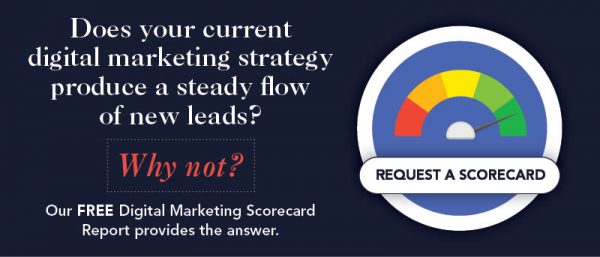The Complete Guide to Local SEO for Financial Advisors
Is your financial advisory firm able to easily connect with local investors in need of financial advisor services? Just about everyone needs financial advice of some sort. The challenge lies in forging meaningful connections with the individuals in your community. However, running traditional outbound advertisements on TV, radio, magazines, and newspapers is no longer enough to help a financial advisory firm add new clients on a regular basis.
As is often said, “Out with the old and in with the new.” Modern-day success in the financial advisory business is largely centered on mastering the nuances of local SEO strategy. SEO is an acronym that stands for search engine optimization. Below, we provide a comprehensive guide to local SEO for financial advisors.
Table of Contents
Click on any topic to review that information
What Local SEO is and Why It Matters
Local SEO is centered on connecting with local investors through online content. Your ability to connect with these essential clients ultimately shapes your firm’s bottom line. Every single aspect of your firm’s online footprint should be optimized for locals in need of financial advisor services. Otherwise, competing financial advisory firms will have a competitive advantage over your business by simply tailoring their online content to the needs and desires of those in your area.
Local SEO success is largely dictated by your willingness to incorporate specific keywords, key phrases and local identifiers in your online content. Google’s search engine algorithms are detailed to the point that they consider each business’s use of local identifiers in online content such as:
- City and town names
- Zip Codes
- Street names
- Even the nicknames of local neighborhoods
This means the strategic use of your city/town name, neighborhood names and local streets throughout the entirety of your firm’s online footprint will help you connect with locals in need of your services.

It is especially important to use localized and industry-relevant keywords and key phrases at the proper saturation rate. Use too few of these keywords and your pages will fail to ascend the search engine results pages (SERPS). Use too many of these keywords for locals and your online content will be penalized by Google and other search engines, pushing it deep down the line of SERPs or even eliminating it from SERPs altogether. Invest your time, effort and a little bit of money in a highly strategic local SEO push and you will have done your part to move your online footprint up the SERPs, gaining valuable online exposure to coveted local clients.
Keep in mind, successful local SEO is the gift that keeps on giving. Once you bring a customer into the fold through your local SEO efforts, he or she will be inclined to remain loyal to your financial advisory firm across posterity or at least as long as your services merit their expectations for results.
Learn more: What is Local SEO for Virtual Financial Advisors?
How do Links Play a Part?
Merely optimizing your online content with local keywords, key phrases, and city-relevant identifiers will not suffice. Links also play a large part in your local SEO success. Ideally, several relevant websites and blogs will link readers and visitors to your firm’s website or another component of your online footprint. If you have the opportunity to write a guest blog post or an editorial on another blog/website, seize that opportunity.
However, it is not enough to simply add your name, title and the name of your financial advisory firm at the bottom of the piece. Do not agree to provide any type of guest blog post or editorial unless the owner of that website/blog promises to feature a link to your firm’s website. This way, those who read or skim your guest blog post, editorial or other write-up will click that link and review your firm’s value proposition.
External links direct a steady flow of important web traffic in your firm’s direction, helping you bring that many more clients into the fold. A word to the wise: do not invest your time and effort writing one blog post after another for outside websites that receive minimal traffic or lack industry authority. Inbound links communicate to Google and other search engines your firm is legitimate and also boost your domain authority. However, if few people visit the site where your links are featured, the time investment will not be worth it.
In fact, it might even make sense to pay a website or blog to feature your guest post if that site/blog receives considerable traffic. The time and money investment required for such considerable exposure really will redirect substantial web traffic to your online footprint, ultimately helping you connect with that many more potential clients.
If you are not confident in your writing ability or do not have the time to write a guest blog post, hire a professional wordsmith to pen these pieces on your behalf. You can slap your firm’s name on the post/article and reap the rewards in the form of a meaningful spike in web traffic to:
- Your website
- Blog
- Social media pages
- Other aspects of your online footprint
Internal Links
External links are only half the linking battle. Internal linking structure also matters. Though few in the financial advisory business know it, adjusting the structure of internal links improves SEO rankings. Internal linking serves the following purposes:
- Distributes webpage authority
- Distributes ranking power across pages
- Boosts website navigation
- Bolsters information architecture
- Perfect your website hierarchy
Internal linking bolsters your website’s overarching search optimization value by establishing a comprehensive network of pages and increasing on-page user time. The best internal linking strategy requires the creation of voluminous content, providing visitors with plenty of reading material, ultimately getting that many more pages listed on those all-important SERPs.
Furthermore, it is prudent to use anchor text to link online visitors to the many components of your firm’s online footprint:
- The homepage
- Individual web pages
- Blog posts
- Social media pages
However, it is a mistake to link readers to the same pages over and over again or link to pages that provide minimal value. Strategically place internal links to the best parts of your online footprint and online visitors will hold your firm in high regard.
Google My Business
Though it will take some time and effort to familiarize yourself with the Google My Business tool, it is worth this minor investment. Google My Business has quickly become an essential component of the local search competition. The masterminds behind Google created this tool to share online content it can verify. In other words, the search engine giant is looking for business web content that serves its specific needs. Provide Google with the opportunity to verify your firm as legitimate and the search engine will provide a reward in the form of desirable sidebar real estate in the local search.
The process starts with creating a Google My Business page then verifying it. It won’t take too much time to use Google Posts in your account. Just be sure to remember to recommend clients share reviews of your firm on the web. Be sure to take the extra step of providing authentic responses to those client reviews with your particular location noted. As an example, it is in your interest to point out your appreciation for client feedback for your firm’s service in a specific city/town in your state. Add your firm’s name at the end of your feedback for additional prominence and search engine recognition.
Fill out your Google My Business page as thoroughly as possible. Every little detail matters:
- Your business’s contact information such as phone number, address and email
- Photos
- Videos
- Firm hours
The local areas you serve are of the utmost importance. Highlight all local towns, cities and zip codes to enhance your firm’s local SEO. Be sure to log into the tool’s dashboard as your firm’s details change over time to implement updates that are 100% accurate.
Google states businesses that include photographs on their Google My Business page enjoy nearly 40% more clicks that send web traffic to their homepage. Just make sure your photos are resized to 720 by 720 for optimal visual clarity. Take some time to select the perfect image for your Google My Business cover photo as this is the picture that will appear when clients find your listing. Seize the opportunity to add videos to your My Business Videos section and you will engage local target clients all the more. These videos should be quick tidbits, merely 30 seconds or shorter in length.
Read our blog article:
How Financial Advisors Rank Higher in Google Maps
Financial Advisory Firm Reviews
The manner in which you handle online reviews matters a great deal. Though it is tempting to provide clients with positive reinforcement for writing positive reviews or writing your own positive reviews under fake names, doing so creates the potential for compliance violations. Furthermore, the reviews you feature on your website, social media or another component of your online footprint should not make any promises.
As noted above, it is in your interest to respond to reviews posted to Google My Business as well as other online review directories including the likes of Yelp and the Better Business Bureau (BBB). Consider using a tool such as BrightLocal to help monitor reviews across the web landscape. It is prudent to search the web for your financial advisory firm name and the word “review” every month or so. If you find any negative reviews, address the criticism with a timely and civil response.
Though you can suggest satisfied clients post a review of your services to the web, you should not direct them to do so or provide compensation for any such reviews. Continue providing elite service and your high-quality reviews posted to the web really will enhance your firm’s visibility on the internet, helping you connect with that many more local clients. If you have any questions about Google’s nuanced review policies, review the details of those policies in-depth before moving forward with anything specific such as the forbidden creation of review stations.
Social Media and the Importance of Local SEO
Do not fall into the trap of assuming social media is a waste of time. Though there is plenty of gossip posted to social media along with more than enough shared links to “fake news”, this inbound marketing channel has the potential to steer countless local clients in the direction of your financial advisory firm.
The keywords, key phrases and local identifiers you use throughout your website and blog should also be used throughout your social media content. Tailor your social media posts to the needs and interests of prospective local clients and those individuals will be inclined to consider the merits of your services.
In particular, Facebook, LinkedIn, Instagram and Twitter are especially popular social media platforms. Be sure to include links to your social media pages on these platforms at the end of your blog posts and website content. It is also important to respond to comments, questions, and complaints posted on your social media pages. Fail to respond to prospective and current clients on these platforms and it will create the impression that your team is out of touch with the local community. Though it will certainly help to share content regarding your unique services and industry, you will generate goodwill amongst target clients in nearby neighborhoods by sharing news stories and other content relevant to your local area. Even adding localized posts to the aforementioned Google My Business will help those in your vicinity find the various components of your online footprint.
If your firm has multiple locations, it is prudent to create specific location pages so target clients in those specific areas can find information about the office closest to them. These pages should clearly indicate each location’s unique information including the following information:
- The phone number
- Email address
- Street address
- Office hours
- Parking information
- Service descriptions
However, this is not to say you should post the exact same information to each location page aside from the idiosyncratic contact details. Create unique content for each location and your audience in those respective areas will feel as though they are receiving truly localized service as opposed to generic service that is exactly the same across the board.
Optimize Your Website
Financial advisors who won the battle for clients through local SEO efforts understand the importance of website optimization.
Every single component of your website should be optimized with local SEO in mind:
- The content itself
- URLs
- Meta descriptions
- Headers
- Title tags
Each blog post you create serves as a newly-indexed page on your financial advisory firm’s website.
Though it is certainly important to provide your target audience with insightful and helpful information about financial advisory services, it is more important to optimize this content with specific key phrases, keywords and local identifiers your audience is likely to sleuth for. Otherwise, you will waste your time creating informative online content that fails to ascend the uber-important SERPs. This means the time you spend researching the most important keywords and key phrases for your industry and local area are just as important as the quality of your online content. Use those essential keywords and key phrases in each of the following:
- Blog posts
- Editorials
- Webpage content
- Headers
- Titles
- URLs
- Meta descriptions
When in doubt, emphasize case studies and client success stories while mixing in the keywords and key phrases to clearly communicate your firm’s unique value offering to locals.
Look for Local Opportunities

It will help to feature guest blog posts and/or editorials featured on local websites.
From local colleges to community organizations and even local businesses, there are countless opportunities to obtain critically important exposure that helps your firm build credibility with local target clients. Some financial advisory firms go as far as providing a scholarship to a local college or university to generate positive PR and boost traffic amongst those living in the area.
Conclusion
It is clear your inbound marketing efforts including a strategic local SEO push are just as important, if not more important, than conventional outbound advertising campaigns. The challenge is establishing the right balance between such traditional forms of outreach and inbound marketing highlighted by a local SEO boost.
Local SEO will increase in importance as we transition to a web-dominated era while traditional forms of outbound advertising gradually become less effective. Part of the beauty of local SEO is it is covert rather than overt. This means those in your area in need of financial services will proactively seek out advisors on the web, find your online content as a result of your local SEO push and reach out to you to schedule an appointment. This approach is much more effective than paying egregious sums of money for conventional outbound ads that often feel overly-salesy and fail to guarantee exposure to your specific target audience.
Above all, you must be patient with your local SEO efforts. It will take some time to build momentum, ascend the SERPs and gain the critically important online exposure to locals in need of financial advisory services. Keep plugging away at your SEO push and you will eventually make headway that leads to a significant increase in business in the weeks, months and years ahead.
Updated 2/7/2021

Can your prospects find you?
Read our guide on 5 Quick Tips to incorporate into your local SEO.
Still unsure? That's OK, we can help.
Read our eBook




